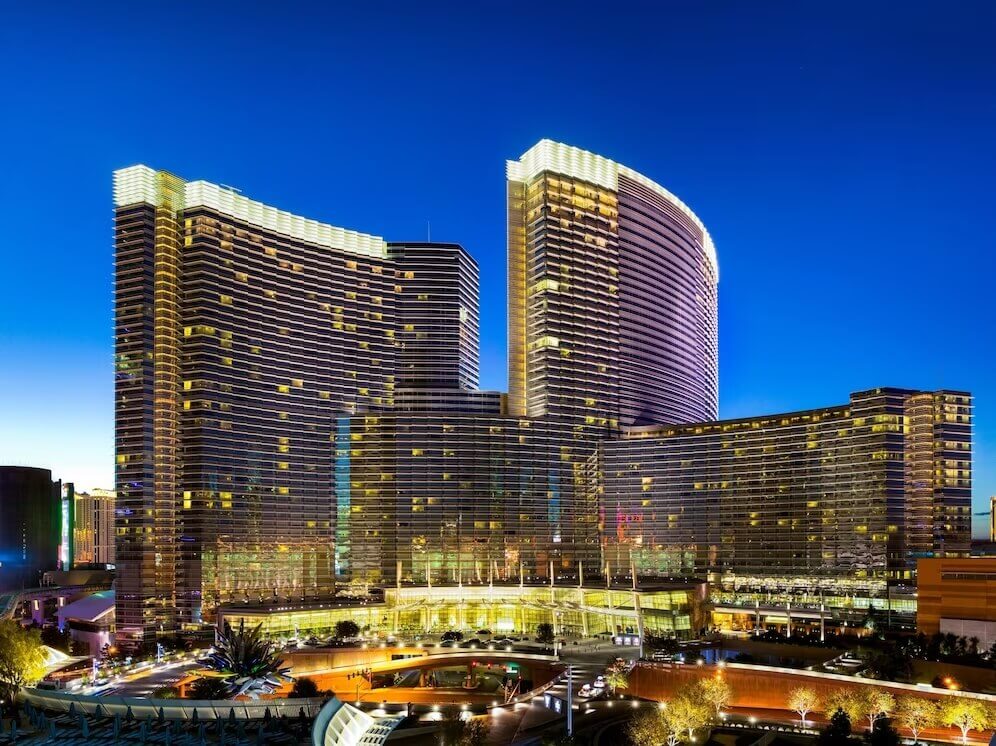The history of water-based casinos in the United States is a tale woven from the intricate threads of legal intricacies, societal dynamics, and the relentless pursuit of financial gain. The evolution of why casinos found their home on the water is not a happenstance occurrence; rather, it is a calculated response to the multifaceted landscape of gambling laws, shifting public sentiments, and economic ambitions.
Casinos are often anchored on water primarily due to legal and regulatory reasons. Many jurisdictions have laws that restrict or regulate gambling activities, but they may allow casinos to operate if they are located on water, usually in the form of riverboats or barges. This arrangement allows casinos to navigate around certain legal restrictions and operate within the boundaries of the law. It’s worth noting that not all casinos are anchored on water; some are situated on tribal lands, in specific zones, or in countries with more lenient gambling regulations.
The Complex Web of Gambling
The presence of casinos within the United States has historically ignited fervent debates, emblematic of the intricate balance that must be struck between ethical values and economic opportunities. Famed gambling havens like Las Vegas, Atlantic City, and the expanse of Native American tribal lands have etched their names in the annals of casino entertainment. Yet, amid these well-known chapters of the gambling story, an intriguing and distinct phase materialized during the early 1990s – the era marked by the emergence of riverboat casinos.
The concept of casino gambling sits at the intersection of various societal forces. The allure of vast economic gains stands juxtaposed against moral and ethical concerns, creating a complex tapestry that has woven its way through the American landscape. The advent of casinos has often sparked debates that transcend mere entertainment; they delve into the heart of societal values, questioning the extent to which the pursuit of profit should be allowed to influence social norms.
Icons of Gambling Entertainment
As the debate raged on, certain locations became synonymous with the world of gambling. Las Vegas, with its vibrant lights and iconic Strip, emerged as a symbol of unrestrained entertainment and extravagant wealth. Atlantic City, nestled on the shores of the Atlantic Ocean, carved its own niche as the East Coast’s gambling haven, enticing visitors with the promise of luxury and chance. Simultaneously, Native American tribal lands embarked on a journey to transform their territories into casino havens, seeking economic revitalization and self-sufficiency.
The Dawn of Riverboat Casinos
Amidst these established bastions of gambling, a novel chapter emerged in the form of riverboat casinos during the early 1990s. This marked a significant departure from the conventional land-based model, introducing an element of mobility and adaptability that set the stage for a unique blend of entertainment and legal innovation. The idea of embracing the water as a medium for casinos encapsulated both historical nostalgia and forward-thinking strategy, demonstrating the willingness of the industry to evolve in response to changing dynamics.
Crafting a Solution: The Emergence of Water-Based Casinos
The transition of casinos to water-based venues was not a random occurrence; it was a result of a calculated dance between gambling laws, shifting public sentiments, and the allure of economic prosperity. The genesis of this shift found its roots in states nestled along the Mississippi River and the Gulf Coast, where a delicate balancing act was performed to reconcile deeply ingrained regional values with the promise of substantial financial gains.
For states positioned along the waterways, the advent of casinos posed a paradoxical challenge. On one hand, these regions held steadfast to their cultural and moral fabric, often expressing reservations about the societal implications of widespread gambling. On the other hand, the tantalizing prospect of economic prosperity beckoned, promising job creation, revenue streams, and community development. It was within this backdrop that the concept of water-based casinos took shape, providing a unique solution that sought to appease both ends of the spectrum.
The decision to embrace water-based casinos over traditional land-based ones was anything but haphazard; it was a strategic maneuver that aimed to navigate the nuanced landscape of public opinion. By positioning casinos on water, proponents of the idea could capitalize on the notion of novelty and innovation. Water-based casinos were, in essence, a departure from the conventional brick-and-mortar establishments, and this element of novelty was a potent tool in swaying public perception.
Understanding the paramount importance of public support, proponents of water-based casinos skillfully presented their case to the communities. By accentuating the controlled and contained environment offered by these casinos, they sought to alleviate concerns related to social degradation and the perceived moral decline associated with gambling. Water-based casinos were portrayed as self-contained entertainment hubs that could be monitored and regulated more effectively than sprawling land-based counterparts.
The Evolution of Riverboat Gambling
The origins of water-based casinos trace back to a time when the industry sought to reconcile contrasting interests and foster a unique form of entertainment. The inception of early riverboat casinos, particularly along the storied waters of the Mississippi River, marked a pivotal moment in the history of gambling. These pioneering ventures provided a refuge for avid gamblers in an era when traditional land-based casinos were limited and subject to stringent regulations. While these early gambling activities lacked official endorsement from law enforcement, they established a precedent that would shape the course of riverboat gambling’s intriguing evolution.
The emergence of riverboat casinos was born out of necessity and innovation. In an era when conventional casinos faced numerous restrictions and societal resistance, the idea of taking gambling to the water emerged as a groundbreaking solution. The concept was simple yet ingenious: by situating casinos on riverboats, operators could transcend the boundaries of rigid gambling laws and regulations that constrained their land-based counterparts.
The Mississippi River, with its labyrinthine network of waterways, provided an ideal backdrop for this novel experiment. Early riverboat casinos found themselves navigating the waters of the Mississippi, offering gambling enthusiasts an escape from the limitations of their surroundings. These riverboats, although not officially sanctioned by law enforcement agencies, became synonymous with a unique blend of risk and reward, setting the stage for the expansion of riverboat gambling.
The gambling activities that unfolded on these riverboats were a precursor to the intriguing developments that would follow. While not operating under the banner of legalized gambling, these early endeavors demonstrated the latent demand for casino entertainment and the willingness of patrons to seek it out, even if it meant navigating the murky waters of legality. This burgeoning interest in gambling, coupled with the mobility that riverboats provided, set the stage for a more structured evolution of riverboat casinos in the years to come.
Pioneering Legalization and Regulation
The turning point of the early 1990s marked a significant juncture in the evolution of riverboat gambling. The vanguard of this movement was Iowa, which boldly took the lead in legalizing riverboat gambling, paving the way for a cascade of similar decisions across states like Mississippi, Missouri, Illinois, and Louisiana. This watershed moment was underpinned by multifaceted considerations that stretched beyond mere entertainment – it was a calculated move that aimed to strike a balance between providing a controlled space for gambling enthusiasts and containing the potential negative repercussions that could emanate from an unregulated expansion of gambling activities.
A Calculated Gamble
The decision to legalize riverboat gambling was informed by a nuanced understanding of both the economic potential and the associated risks. By providing a legal avenue for gambling on water, states sought to channel the demand for entertainment into a controlled environment. This calculated approach not only tapped into the economic benefits of the industry but also curbed the unregulated proliferation of gambling across regions.
Curbing the Geographical Spread
One of the key motivations behind legalizing riverboat gambling was the desire to contain the geographical footprint of the industry. By confining gambling activities to waterways, states effectively curtailed the expansion of casinos onto land, mitigating the risk of over-saturation and the social consequences that might accompany it. This strategic containment aimed to strike a balance between economic growth and social stability.
Sovereignty and the Native American Influence
Concurrently, a parallel narrative of transformation was unfolding within the realm of casino gambling. The legal landscape underwent a seismic shift with a landmark Supreme Court ruling that bore profound implications. This ruling opened the door to casinos on Native American tribal lands, an endeavor propelled by tribes seeking economic avenues within the boundaries of their sovereignty. The enactment of the Indian Gaming Regulatory Act in 1988 laid down the framework for casinos on tribal lands, underscoring the intricate interplay between federal, state, and tribal jurisdictions.
Empowerment through Sovereignty
The ascendancy of Native American casinos was underpinned by the concept of tribal sovereignty. Native American tribes, possessing territories recognized as sovereign, found a legal pathway to establish casinos on their land. While this sovereignty granted autonomy, it wasn’t without its limitations – actions on these lands were subject to federal laws if they impacted the broader American public.
From Riverboats to “Boats in Moats”
As the riverboat gambling phenomenon gained momentum, the industry revealed its adaptability by responding to changing preferences. The early riverboat casinos were reminiscent of cruising vessels, offering fleeting gambling windows during the voyage. However, as patron expectations evolved, the industry transitioned to a novel model known as “boats in moats.” This strategic shift saw the establishment of stationary casinos at the water’s edge, providing an alternative to prolonged cruises.
Conclusion: A Historical Tapestry Unveiled Water-based casinos in the United States represent a culmination of historical, economic, and legal forces that have converged to create a distinctive form of entertainment. Emerging from their humble beginnings on riverboats as a response to restrictive gambling regulations, these casinos have evolved into stationary establishments on the water’s edge. This evolution reflects a harmonious blend of history, economic aspirations, and societal considerations, as the allure of casinos on water continues to weave its magic on the ever-changing landscape of entertainment.



